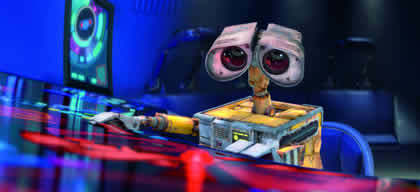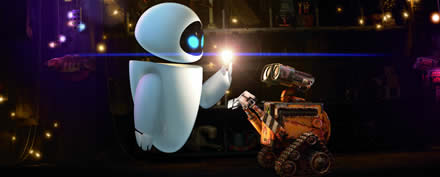 says that his first thought was Put on Your Sunday Clothes from Hello Dolly. At first he thought it was an odd choice but ultimately considered it to be the best one; old fashioned music versus space, old and new juxtaposed. Stanton thought that the phrase “out there” made it especially fitting. The song sets the central tone of the movie, a tone of hope, nostalgia, and love.
says that his first thought was Put on Your Sunday Clothes from Hello Dolly. At first he thought it was an odd choice but ultimately considered it to be the best one; old fashioned music versus space, old and new juxtaposed. Stanton thought that the phrase “out there” made it especially fitting. The song sets the central tone of the movie, a tone of hope, nostalgia, and love.
The score is what completes the film; Louis Armstrong’s rendition of Edith Piaf’s La Vie en Rose is what reminded me of the old Disney classics like Snow White, Cinderella, The Jungle Book and Pinocchio. Andrew Stanton noted that the use of Hello Dolly also made it easy to convey the phrase “I love you” without having to say it. At the end of the number Put on Your Sunday Clothes there is an image of two people holding hands; imitating what he sees, Wall- E holds his own hand as though he is holding someone else’s. Wall-E is a loveable character reminiscent of E.T and Johnny 5. Although he has almost no dialogue, Wall-E is able to convey distinctive emotional traits, most of which he expresses through his binocular eyes and head movements. He almost  always hides his whole head in his body like a turtle when he is afraid or intimidated by something or someone. The character is also very accident prone; his curiosity seems to get him in trouble time after time. Wall-E has very distinctive squeaks and sounds that almost make you almost his lack of dialogue.
always hides his whole head in his body like a turtle when he is afraid or intimidated by something or someone. The character is also very accident prone; his curiosity seems to get him in trouble time after time. Wall-E has very distinctive squeaks and sounds that almost make you almost his lack of dialogue.
Also at the Roundtable were Fred Willard, Ben Burtt and Jeff Garlin. Academy award winner, Ben Burtt was the sound designer of Wall-E; he says that the noises made by Wall-E‘s treads were generated using an army hand-cracked generator that he purchased through eBay. Some of the sounds used in Wall-E he had recorded when he was a kid. He also says he used a computer program which allowed him to break down sounds and alter them until he had what he was looking for.
Jeff Garlin plays the voice of the Captain and noticing that he was always being filmed during recording sessions he asked, “why are there so many behind the scenes takes ?” Later he was told that he was being filmed so that the animators could emulate his mouth and facial movements. Garlin identifies the main theme of the movie as “love conquers all- in the film love did more than that, it changed the world.

